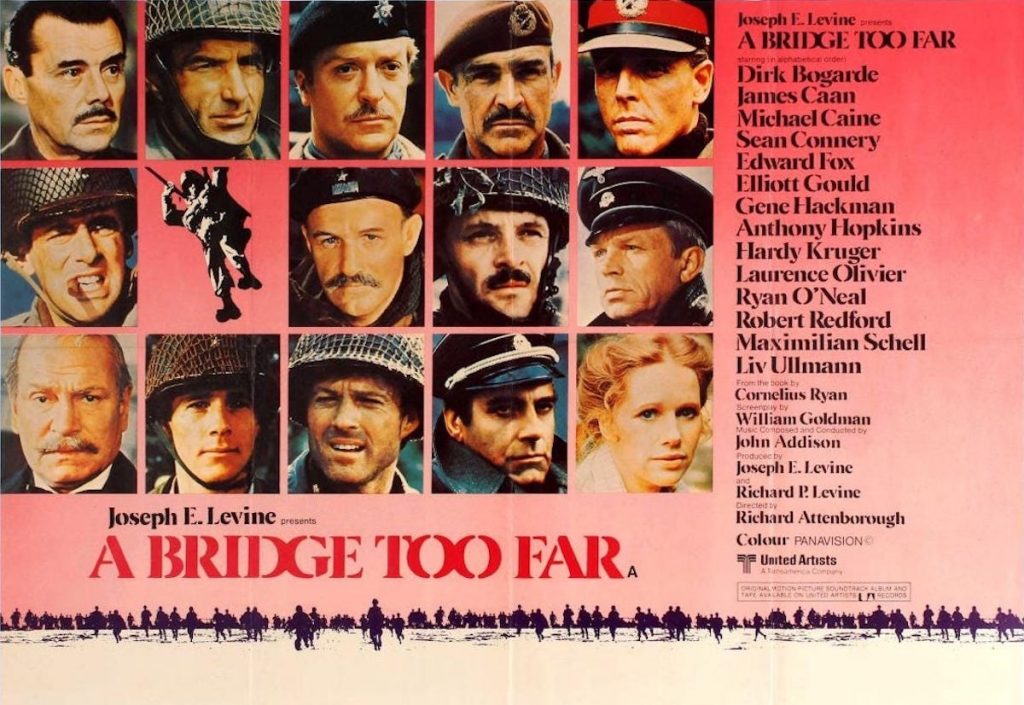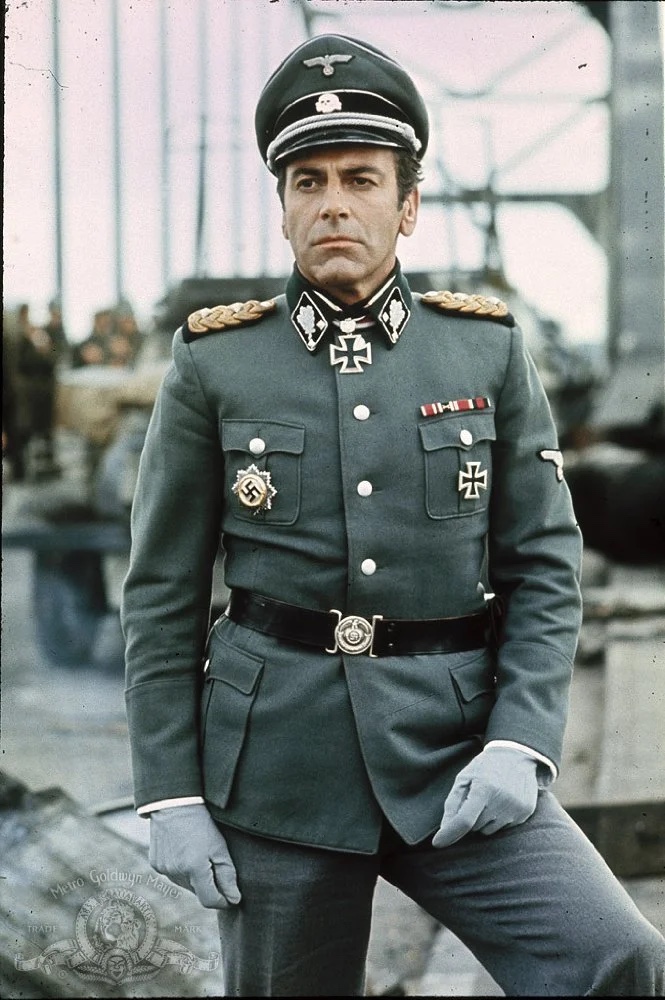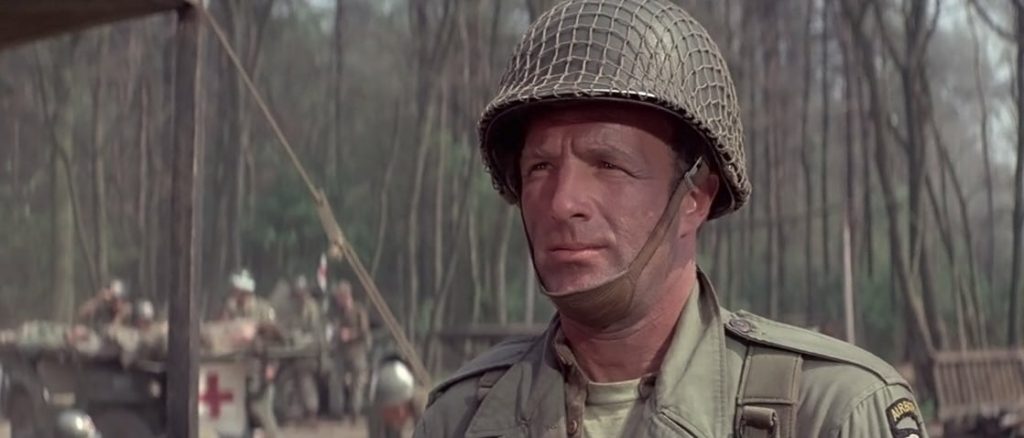

Described by American film critic Roger Ebert as ‘the longest B-grade war movie ever made’, this film is clearly intended to be on a par with another Cornelius Ryan adaptation, The Longest Day.
And in some respects it is. It’s certainly an epic production. But when Ebert’s critic buddy Siskel describes it as not much more than ‘a parade of famous faces’, we can be fairly sure that some who saw this weren’t too impressed.

Directed by Dickie Attenborough, I can see why some folk find it less than 100% satisfying. It’s length – and it is very, very, very long – could be a strength. But for those who don’t like it, it might feel like an interminable drag. Although I very much do like it, and have watched it many times, I have nonetheless often found myself drifting off at points.


Having started with quite a critical over view, let’s get into what’s good about it. For starters there’s the sheer scale of the production. In a pre CGI works, such epic productions really are a special thing, to be treasured.
Yes, ‘rivet counter’ type buffs will carp at the wrong or badly faked materiel. But, frankly, this isn’t the worst offender in terms of WWII movies. Nowadays it’s become easier to either fake real vehicles, or use CGI. But ‘back in the day’ it wasn’t necessarily so easy, or – in truth – always deemed important enough.
It’s clear that efforts were made. But not enough satisfy those who know their SdKfz’s from their PzKpfw’s! I’m a WWII military history nut/buff, but I’m prepared to hold the pedantry beast in abeyance and give older movies more leeway.

Whilst The Longest Day was shot in black and white, A Bridge Too Far is in colour. But they share not just epic proportions and Cornelius Ryan books as their basis, but also great stirring scores, terrific star-studded casts, and a desire for accuracy that includes having the right languages spoken, with subtitles.

Feldmarschal Model is portrayed as a self-important buffoon, with some of his subordinates chafing under his pompous complacency. How accurate this is I have no idea. Amongst the English brass there’s a preponderance of whiskers and clipped toff accents. The Yanks are, predictably, sceptical of Monty’s plans, and, for the most part, gruff no-nonsense ‘balls out’ tough guys!
This can reach almost comically cartoonish dimensions, as with Elliot Gould’s fun but faintly irritating cigar-chomping Col. Stout, based on Col. Sink, of Band of Brothers fame!

Most of the actors acquit themselves admirably. The only real clangers, for me, are the aforementioned Gould, and Gene Hackman’s Polish Maj. Gen. Sosabowksi, whose accent is bizarre, coming off more Brooklyn than Bialystok!
Making a war film of this type is, I suspect, much much harder than most would imagine. Trying to balance a grand overview with the nitty gritty details, weighing historical accuracy against dramatic and entertainment considerations, and so on.

War is – according to many testimonies – largely boredom punctuated by brief but intense moments of terror. And the need for exposition can make ‘leadership scenarios’ seem rather leaden.
And then there’s the logistical stuff, both that required to make the movie, and the stuff depicted, such as the Bailey bridge building scene, and the build up to Maj. Cook’s crossing of the Waal, to take the Nijmegen bridge.
Personally the more I see this film, the better I think it is. Sure, it’s not perfect. Very little is. But it is epic, exciting, sometimes funny, sometimes moving. Definitely a film worth watching.

* Interestingly this rather colourful episode is allegedly based on real events. Although the exact details aren’t altogether the same in real life as they are in the film, it makes cracking good film entertainment! For the real story, try this link.
Here’s another interesting link, with some nice production photos. And this one is very detailed, with plenty of pics and lots of info’, inc. a link to a comparison of actors with the characters they portray.
